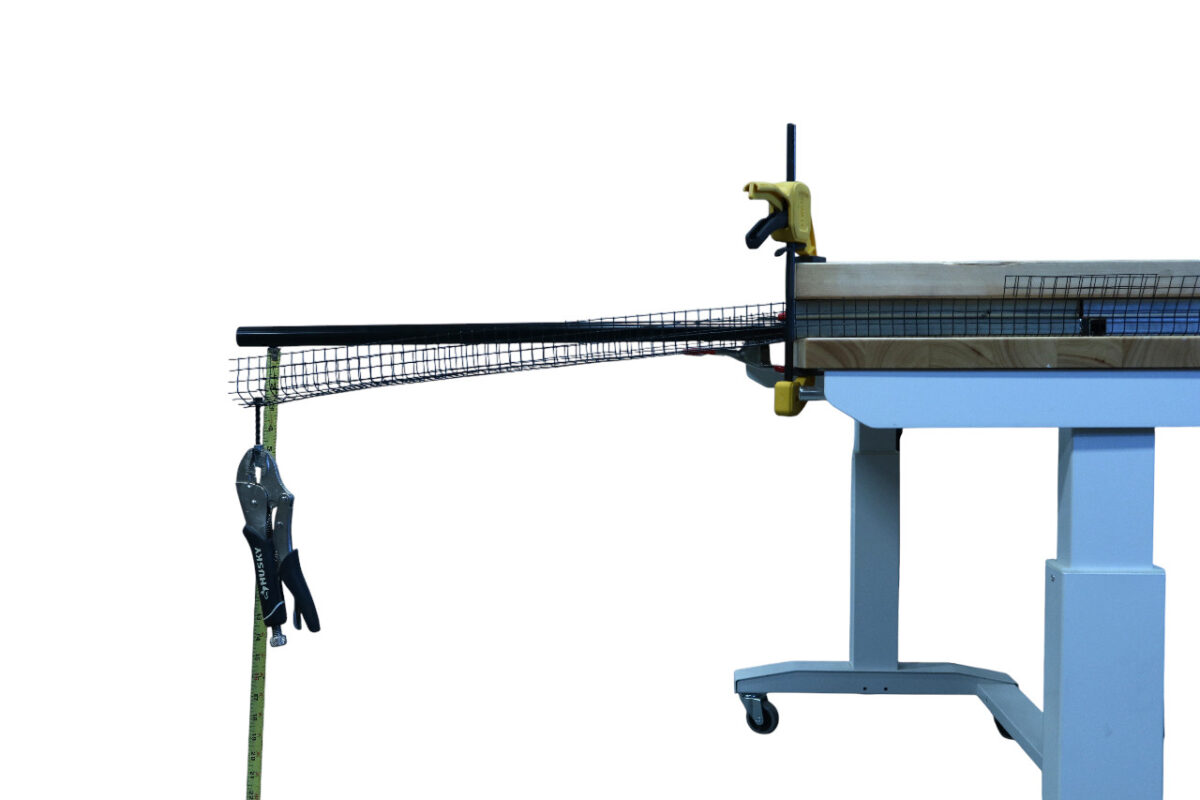Solar critter guard wire mesh is designed to keep pests like birds, squirrels, and other animals from getting under your solar panels and building nests. By blocking access, it helps prevent nests, chewed wires, debris buildup, and even fire hazards—ultimately extending the life of your solar system and protecting your roof. This is why durable solar panel protection fencing is important.
Most of the wire mesh used in U.S. solar installations is manufactured in a few factories in China. However, not all mesh is created equal—there are noticeable differences in quality, which is why prices vary so much. We noticed that Home Depot and various Amazon brands are selling mesh purportedly suitable for solar critter guard, but at suspiciously low prices. So we ordered a few rolls to see how they compared to the high quality mesh we distribute at Slick Tools.
To help you choose the best wire mesh for your critter guard installs, we tested three popular options: Vevor (sold by Home Depot and Amazon), ZeroPone (from Amazon), and Solar Armor (from Slick Tools). Here’s what we found:
Basic Properties
To begin our comparison, we looked at the key physical features of each wire mesh:
- Wire and Coating Material – This is a major factor in how well the mesh resists rust and corrosion. All the meshes we tested use galvanized steel wire with a PVC coating for added protection.
- Wire Spacing – Each mesh has ½” spacing between wires, which is typically enough to keep pests from getting under a solar array.
- Wire Diameter (uncoated) – This is the thickness of the bare wire, measured without the plastic coating. Thicker wire generally means greater strength and rigidity.
- Coated Wire Diameter – Refers to the PVC layer’s thickness. A thicker coating offers better resistance to moisture and UV damage, which improves durability over time.
| Coating Type | Wire Spacing | Bare Wire Diameter | Coated Wire Diameter | |
| Vevor | PVC | 4 Squares per inch | 24GA (.022”) | 0.032” |
| Zeropone | PVC | 4 Squares per inch | 23GA (.0263”) | 0.039” |
| Solar Armor | PVC | 4 Squares per inch | 19GA (.041”) | 0.058” |
As you can see, there is a significant difference between the bare wire diameter and the coated wire diameter across each mesh brand. Both the wire thickness and the coating contribute to the mesh’s overall rigidity and strength.
Stiffness Test
For a wire mesh to stand up against critters and the elements, stiffness is key. A stiff mesh will resist being pulled out by squirrels or pushed in by wind and loaded-up snow. So we put together a simple stiffness test to compare the meshes.
To measure stiffness, we:
- Bent each wire mesh sample into a C-channel.
- Clamped each C-channel to a table with exactly 1.5 feet cantilevered off the end of the table.
- Applied a constant load to the end of the cantilevered mesh.
- Measured how much the mesh deflected when the load was applied.
A flexible mesh will deflect more under load; a stiff mesh will deflect less.
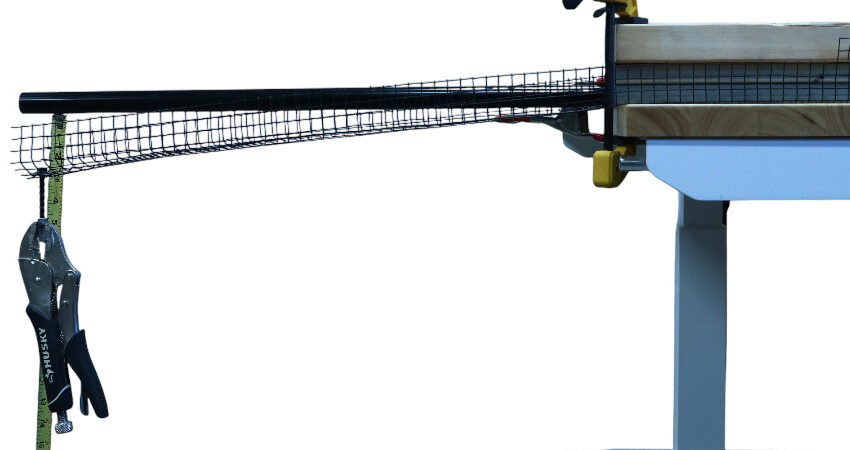
Why we bent mesh into C-channels
If you’re familiar with our AG Bender wire mesh forming tool, you know we believe that bending wire mesh into L- or C-channel shapes makes it significantly stronger than using flat, unbent mesh for solar critter guards. You can learn more about this in our rail mount method video.
Test Setup
Here are the tools and materials we used in this test.
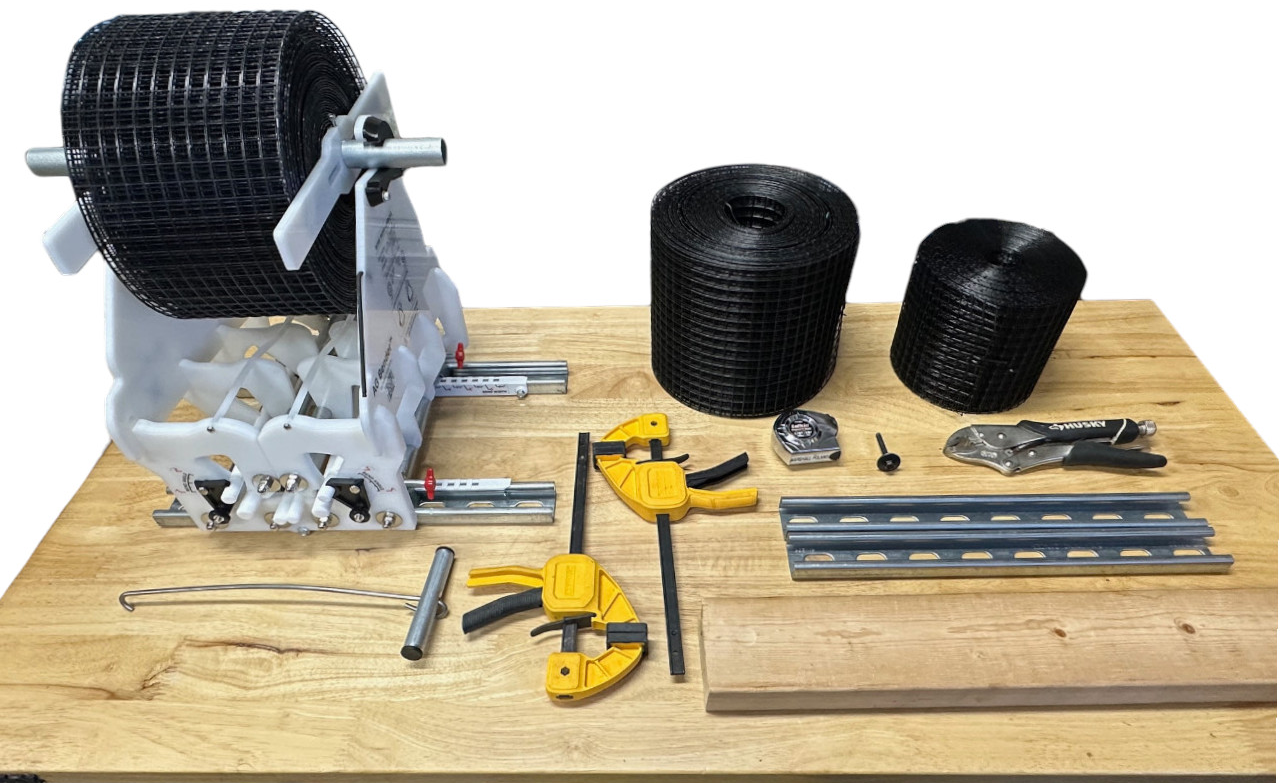
- Wire mesh test samples – We used 6-inch wide mesh cut into 4-foot lengths. Each piece of mesh was bent into C-channels with a 3-inch center portion and two 1.5-inch flanges.
- Unistrut and a scrap 2×4 – Holds down the center of the mesh.
- Clamps – Secures the mesh and Unistrut/2×4 to the table.
- Bolt and vise grips – These are our uniform weight, which we hang from the end of the cantilevered mesh. They weigh 1.31 pounds together.
- Measuring Tape – For setting the cantilever of the mesh and measuring its deflection.
- AG Bender – Ensures consistent, repeatable bends in the mesh. If you don’t have one, a 2×4 can be used as an alternative for bending.
Clamping the Wire Mesh for Testing
You can improvise when clamping the wire mesh to a table, but there are a few important details to ensure consistent results:
- Extend exactly 1.5 feet of mesh past the end of the table so it is cantilevered / unsupported.
- Clamp both the front and back edges of the mesh securely to the table.
- Use Unistrut to clamp the mesh, so that only the middle ~1.5” of mesh is pressed firmly against the table.
- Your setup should not touch the vertical flanges of the mesh C-channel; the flanges should be allowed to flex under load.
Here’s how the mesh is clamped for the test.
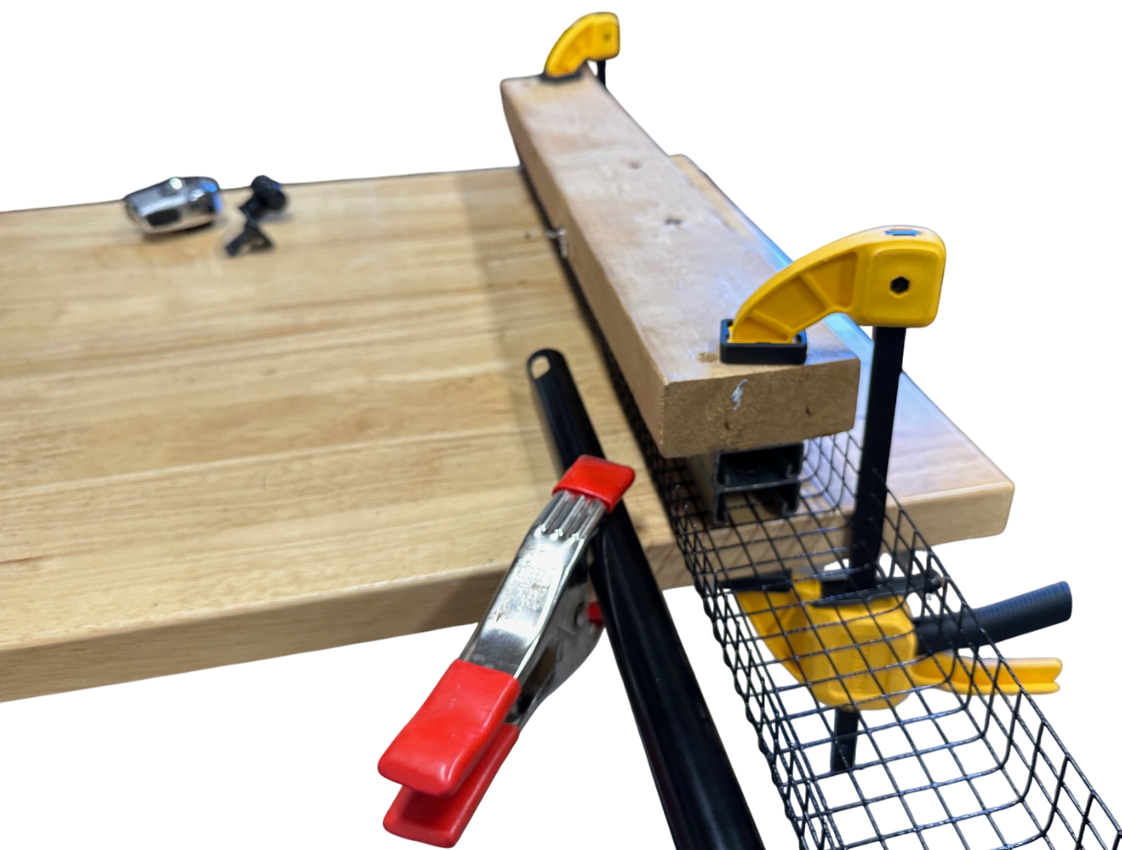
Running the Test
Once the mesh is clamped and set up correctly, it’s time to run the deflection test.
- Measure the distance from the floor to the end of the cantilevered mesh (the middle portion of the C-channel).
- Hang the bolt & locking pliers from the end of the mesh, near the center of the “C” profile.
- Repeat the measurement from step 1.
- Calculate the deflection: (distance from step 1) – (distance from step 2) = Deflection
- Repeat steps 1-4 for each mesh sample, making sure all conditions (clamping, cantilever length, weight, measurement point, etc.) stay the same across tests.
This method gives you a clear comparison of how much each wire mesh can bend under identical conditions—helping you evaluate stiffness and rigidity with consistency.
Results

Vevor brand (Amazon / Home Depot) – Shown bending 3” past zero
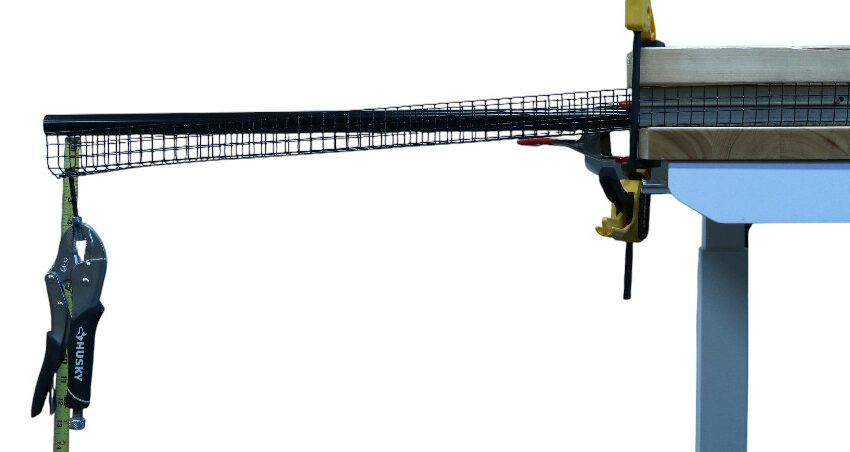
Zeropone brand (Amazon) – Shown bending 2” past zero
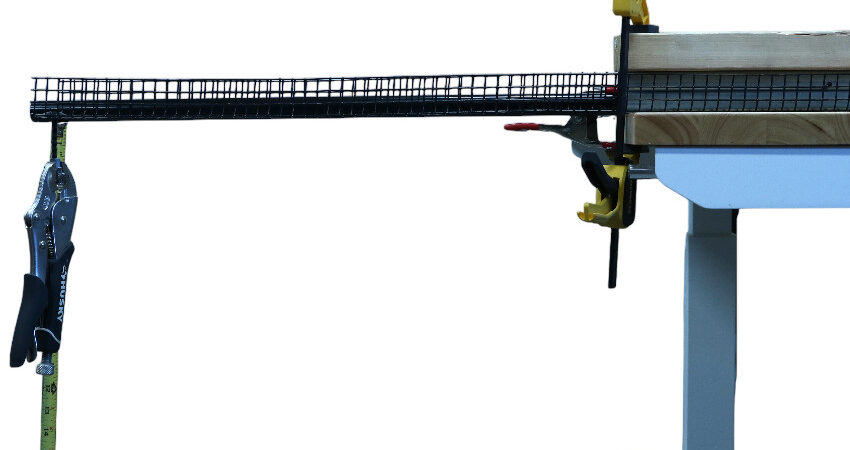
Solar Armor brand (Slick Tools) – Holding strong at 0
Clearly, the Vevor brand sold by Amazon and Home Depot was the least stiff mesh with a deflection of 3 inches. We would really hesitate to recommend this product for anything but the most mild pest mitigation situation. Think little birds; definitely not squirrels, rats, raccoons or other critters. On the positive side, this mesh has great spring-back – meaning it does not dent easily. Also, its lack of stiffness may make it easier to form it into difficult shapes, as is sometimes required to conform to uneven (e.g. tile) roof surfaces.
The ZeroPone mesh sold through Amazon performed significantly better than Vevor, bending only 2 inches below horizontal. Its slightly thicker bare wire and PVC coating gave it more rigidity and strength, allowing it to support the locking pliers with less deflection. That said, this product is still less beefy than we consider adequate for installation on a roof.
The Solar Armor mesh sold by Slick Tools showed the best performance, with negligible bending in this test. Its much thicker wire and PVC coating easily supported the weight of the locking pliers without any signs of stress.
Strength Test
Before running our stiffness test, we performed a preliminary strength test to see how far each mesh could extend off the table before failing. This helped us determine the maximum usable length for the deflection test. The Vevor mesh ended up being the weakest, supporting only a ~1.75-foot overhang before collapsing under the weight of the locking pliers. The Slick Tools mesh refused to collapse, even with almost its entire 4-foot length extended out from the table.
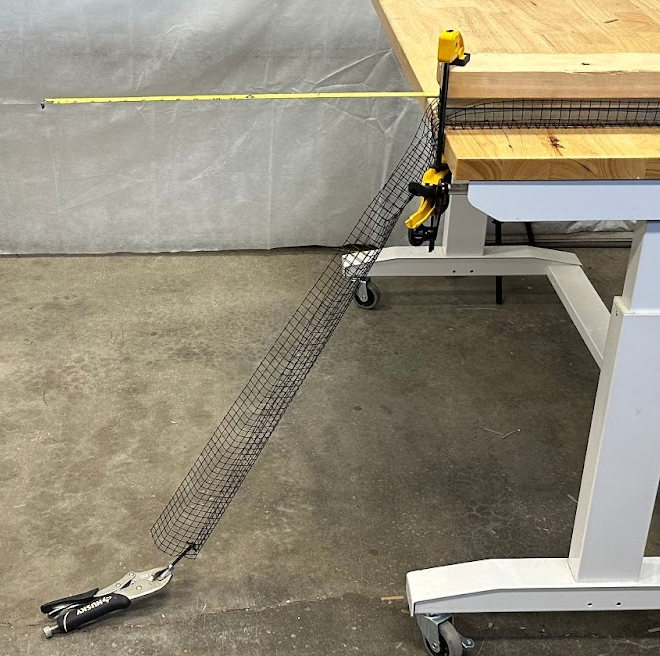
Takeaways
The stiffness test confirms what is pretty obvious from handling the mesh: when it comes to stiffness and strength, thin-gauge wire meshes like those sold by Home Depot and some Amazon sellers are in a different ball game from heavy duty meshes like Solar Armor. Unfortunately, the meshes are marketed very similarly on the internet, and many consumers probably don’t realize this distinction until they’re on their roof trying to protect their PV investment with something more akin to a window screen than a metal grate.
Solar critter guard is a “do it right or do it twice” situation. Since it’s not easy to spot or repair bent/dislodged critter guard after the initial install, using a flimsy mesh isn’t worth the risk. We encourage professionals and DIY homeowners alike to use products that will last as long as the PV system itself, which is often 20+ years.

